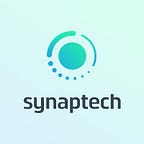Dystopian or not, Computer Vision will help humanity
The series of articles that describe AI-related terms continues! Previous article was written about Autoencoders, and today’s one is about Computer Vision.
Does the thought of being watched by machines make you quiver? Knowing that out there, hiding beneath a tree’s branch is a camera, recording every step you take, having knowledge of who you are and what you have done. It does seem like an adaptation of 1984 or other dystopian novels, but it might become reality through Computer Vision.
First of all, don’t worry and please don’t start throwing rocks at software developers for implementing it. Although this is the dark side of it, Computer Vision will be helpful to humanity in the upcoming years. Until then, let’s see what it is and what can it be used for.
What is Computer Vision?
It is the digitized version of the human vision. Computer vision is an algorithm that teaches a computer to reconstruct, interpret and understand a 3D scene from its 2D images as present structures in the scene. More exactly, how to tell the difference between a person, an animal and an object, through a camera lense, and it can be implemented in robots which are in the control of automatic lines and more.
Although the human vision is difficult to replicate, because it needs to replicate the visual cortex, the retina and the brain itself, it is somehow limited to the visible spectrum, while the one generated on computer can see further. But, the main problem is some images might be noisy and not offer enough information.
What and who are using it?
We know now what Computer vision is and on what basis its implementation can be made. But what companies do use it and on what exactly are they focusing the algorithm?
Eye tracking. What if you would have another eye in your own eye? Smart Eye offers that, a non-invasive eye, eyelid and head-tracking technology for a wide range of industries, but mostly for automotive, aviation and aerospace.
Object Recognition. One cool startup that developed a software that can recognize thousands of categories, tags, objects and images is Clarifai. The technology’s core is a deep learning API used in the development of a new generation of intelligent apps, including advertising, eCommerce and more.
People tracking. There it is, the shiver down the spine. Sighthound’s purpose is not to spy of humanity, but to be aware of the happening events. It can distinguish humans from objects and also has the ability of analyzing videos, in case of accidents, crimes, fights and more.
Medical imaging. Mirada Medical’s new development is changing the way diagnosis is offered through images. Their software is highly used in radiology, radiation oncology and other medical fields.
Face recognition. Goodbye, door keys! Thanks to Chui, the intelligent IoT doorbell that uses facial recognition to offer a secure, keyless door, now you don’t have to worry about getting locked outside.
Other domains where Computer Vision can be used are agriculture, AR, autonomous vehicles, biometrics, forensics, industrial quality inspection, gesture analysis, image restoration, pollution monitoring, remote sensing, process control and security and surveillance.
The next article regarding Artificial Intelligence glossary terms is convolutional neural networks. Until then, you can be kept up-to-date with Synaptech’s new speakers and other news, on our Twitter and Facebook account.
